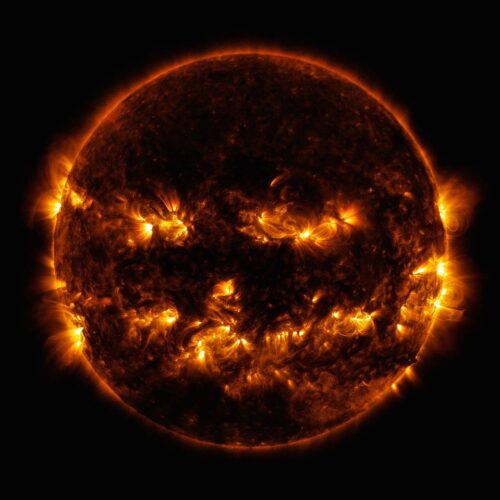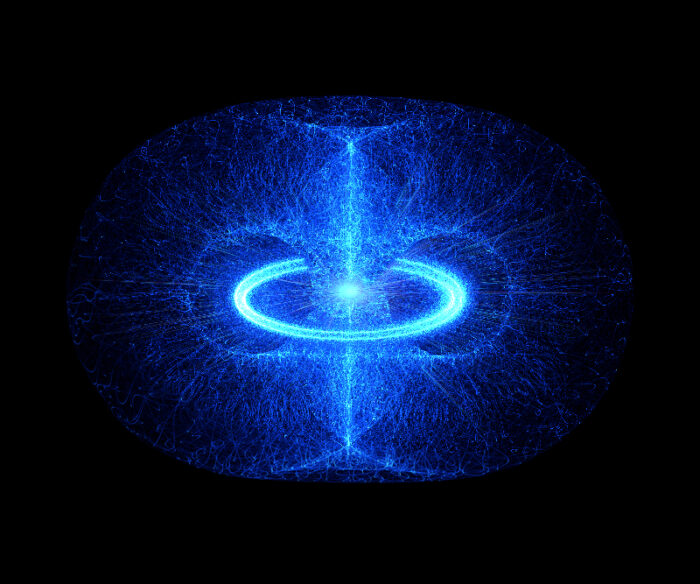When we talk about green energy (which we do quite a bit around here!), we talk a lot about solar or wind. These are renewable sources of energy that do not contribute greenhouse gases to our atmosphere. And recent innovations have gone a long way toward making these sources of power more powerful and reliable than ever.
But there is another source of clean energy that we don't discuss as much that is maybe the most promising one of all: Nuclear fusion.
This is the process of joining two atoms together to create a 'heavier' or larger one. It has the potential to create nearly limitless power, from a simple, plentiful resource, and creates no waste. It is also the process that powers our Sun, so you know it's pretty good!
But despite experimenting making our own fusion reactors since the 1940s, we humans have never been able to get past one big issue. Our fusion reactors have always needed way more power to get going than they produce. And when the point of the reactor is to make energy, that's sort of a problem. So fusion has always felt like more of a dream than a reality.
Until now!
BREAKING NEWS: This is an announcement that has been decades in the making.
On December 5, 2022 a team from DOE's @Livermore_Lab made history by achieving fusion ignition.
This breakthrough will change the future of clean power and America’s national defense forever. pic.twitter.com/hFHWbmCNQJ
— U.S. Department of Energy (@ENERGY) December 13, 2022
On Tuesday, a team of US researchers announced that they finally made a fusion reactor that produced more energy than it used. This breakthrough could be a major turning point in how we make energy in future.
How is fusion different?
The world's nuclear power plants use fission reactors. Though these don't release greenhouse cases, they do create dangerous radioactive waste. (Getty Embed)
Nuclear energy has existed since the 1950s. But it has always been made by nuclear fission, which is the opposite of fusion.
Fission is created by splitting larger atoms into smaller ones. The splitting releases a bunch of energy, which then heats up water, which produces steam, which spins turbines, and bingo: electricity is made!
But fission also creates a lot of dangerous radioactive waste that must be disposed of carefully. The radiation is creates is very dangerous to humans and other life on Earth.
Fusion, as we mentioned earlier, joins atoms together. Because this process doesn't create radioactive waste, scientists want to make it a reality. But the pressure required to get two atoms to fuse together is enormous. There's reason that it only happens inside stars like our Sun—the immense gravity and heat generated in the core of a star is ideal for atom fusing!
But how do you recreate that situation on Earth? You can see why our nuclear fusion reactors always needed more energy to get going.
How did they do it?

The Sun is a massive fusion reactor. Recreating its power on Earth is the major challenge in getting our own working fusion reactor. (NASA/GSFC/SDO)
In the Sun, its massive gravity is a big part of how fusion occurs. The pressure literally crushes hydrogen atoms into each other to make helium.
Here on Earth, we can't make that kind of gravity. So instead, we need to create a lot of heat to make fusion happen. We're talking about 100 million degree Celsius or 10 times the temperature of the core of the Sun. Wow.
In this experiment, researchers used 192 lasers, all focused on the inner wall of a chamber that contained a small capsule full of two elements: deuterium and tritium. The lasers produced X-rays that struck and 'squeezed' the capsule until the fuel 'ignited', causing a powerful fusion reaction.
Success!
What does this breakthrough mean?
Scientists announce their fusion breakthrough on Tuesday, December 13. A working fusion reactor would be more powerful than a fission reactor, while producing zero waste. (Getty Embed)
So what's next?
Well, the recent breakthrough was only about a single 'ignition'—one momentary fusion reaction. To create sustainable power, we need to be able to make hundreds of fusion reactions happen regularly in a controlled environment.
Thanks to the work at the Lawrence Livermore National Laboratory, nuclear fusion finally looks like a thing that humans can do. But there is still more work to be done to get to the point where nuclear fusion plants exist and create our energy.
But it is a worthy quest. With teams working on fusion in not only the US but countries like France, China, Germany, and Canada, we're excited about the possibilities of leaving fossil fuels behind for good!
 This image is of the high energy particles flowing through a tomahawk fusion reactor, one of many experimental prototypes where we've tried to get closer to fusion power. (ID 170922264 © Dani3315 | Dreamstime.com)
This image is of the high energy particles flowing through a tomahawk fusion reactor, one of many experimental prototypes where we've tried to get closer to fusion power. (ID 170922264 © Dani3315 | Dreamstime.com)










😀 It’s great for the earth! #NoNuclearWaste!
🙂 Great news can’t wait to see nuclear fusion power plants up here in Canada 🇨🇦